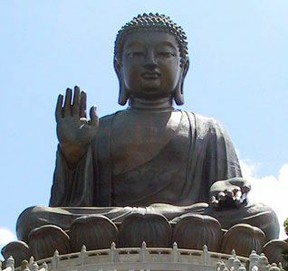The main goal of this set of techniques is to free your mind from worries and daily fears and chit chatter, so that you no longer feel any cravings for material things and physical objects surrounding you, or things that you want.
The interesting thing about this is that you are aware of everything throughout. You are aware of your mind's chatter and you are aware of it decreasing over time. Also you are fully aware of how your mind starts to let go of its hold on 'things'.
However you do need to practice it on a regular basis to achieve good results. You cannot expect to do a meditation session once a week and see results right away. But think of what you will be able to achieve eventually: a state where you will be completely relaxed, calm and stress free. You won't have any worries surrounding your mind. For a short time you will almost experience something called bliss.
I call it total relaxation, or total happiness.
And the more often you will achieve it, the more you will want it, thus the more you
will meditate. It is a healthy catch 22. Have you ever noticed how our mind has a life of its own and it can make use happy one moment and truly miserable another moment?
All it needs is to remember of something worrysome that might or might not happen, and your good mood is just about gone. We usually find that it's much easier to become unhappy than to become happy.
Can you relate? I surely can. It is the way the mind words, it's like it feels a responsibility towards us to remind us of all the personal problems or that of the world surrounding us.
Due to the modern way of life full of stress and problems (many simply created in our minds), at least 80% of the day we are morose, busy, tired, angry, anxious, full of worry, sad, or needing something that we cannot have.
And then we have those few moments throughout the day when something happens and we're in a good mood again, we say we're happy. But how easy it is for those few moments to get replaced - again - by our usual black mood.
By regularly practicing the various Buddhist meditation techniques, you will notice that your negative thoughts will come less and less often in your mind, they will not be so quick to intrude when they are not welcome.
Finally, here is another aspect that this can help with, which also relates to our mood.
Due to our materialistic society, we are becoming very excited and happy about things we get - for birthdays or other occasions, or a new partner, or any other possessions that we can get hold of. Once the novelty wears off, we're back to negativity. Have you noticed this? I know I have.
Through practicing Buddhist meditation techniques, by eliminating this need for possessing everything and everyone, we become automatically happier because we will let go of attachments from our mind. We will finally be able to be look at a beautiful sunrise or sunset and smile, simply because.




 Buddha was a prince by social status, however he was a regular person, just like any of us, before becoming enlightened. He has practiced meditation throughout his entire life with the purpose of removing any material cravings from his life as well as selfishness. He wanted to become
Buddha was a prince by social status, however he was a regular person, just like any of us, before becoming enlightened. He has practiced meditation throughout his entire life with the purpose of removing any material cravings from his life as well as selfishness. He wanted to become

 Percy Jackson Books In Orderon 10/15/2014
Percy Jackson Books In Orderon 10/15/2014
 Meditation For Pregnancyon 09/25/2013
Meditation For Pregnancyon 09/25/2013
 New Age Meditationon 09/23/2013
New Age Meditationon 09/23/2013
 How To Use Essential Oils With Reikion 09/22/2013
How To Use Essential Oils With Reikion 09/22/2013



Do You Practice Meditation? If Yes, What Kind?
Yes I am learning meditation at present. I love your article very interesting.
I meditate often. I find it really calming and relaxing. This was very informative.